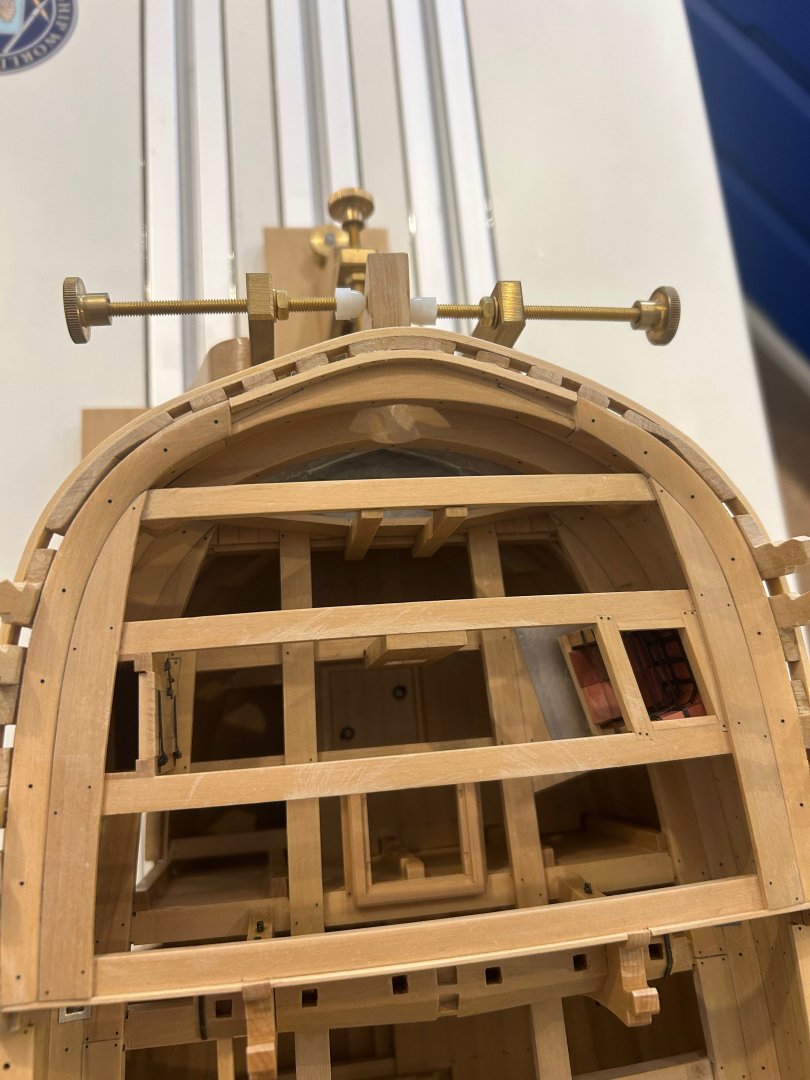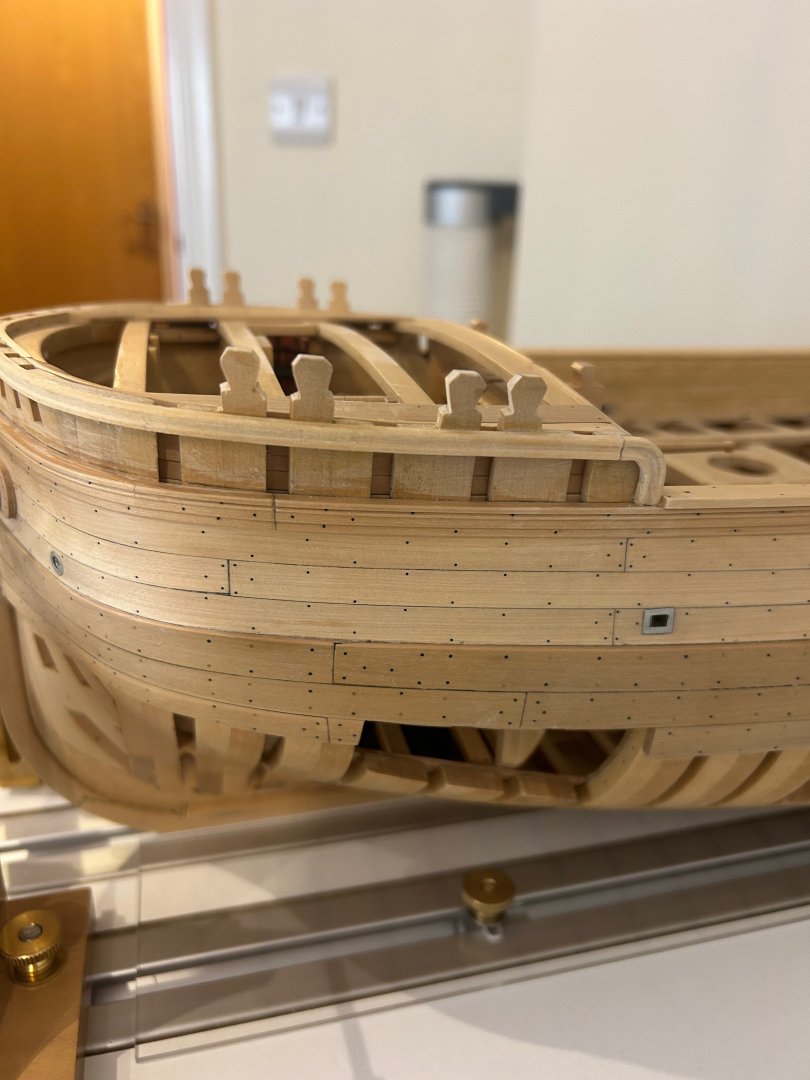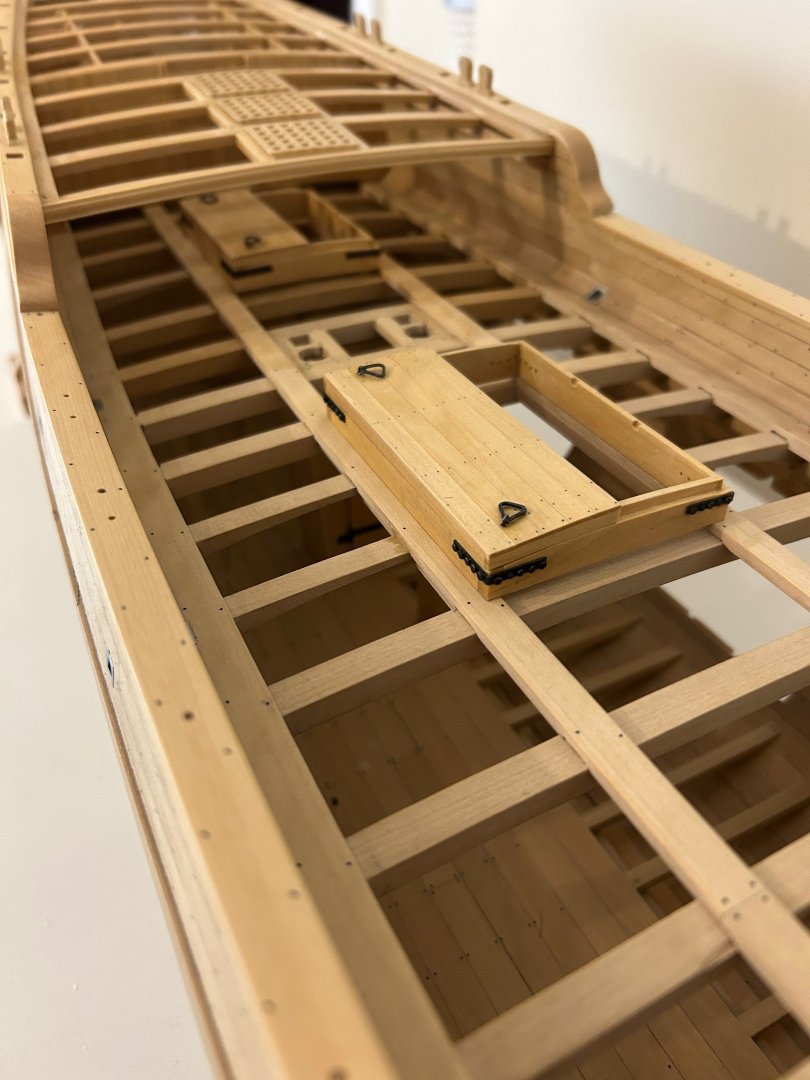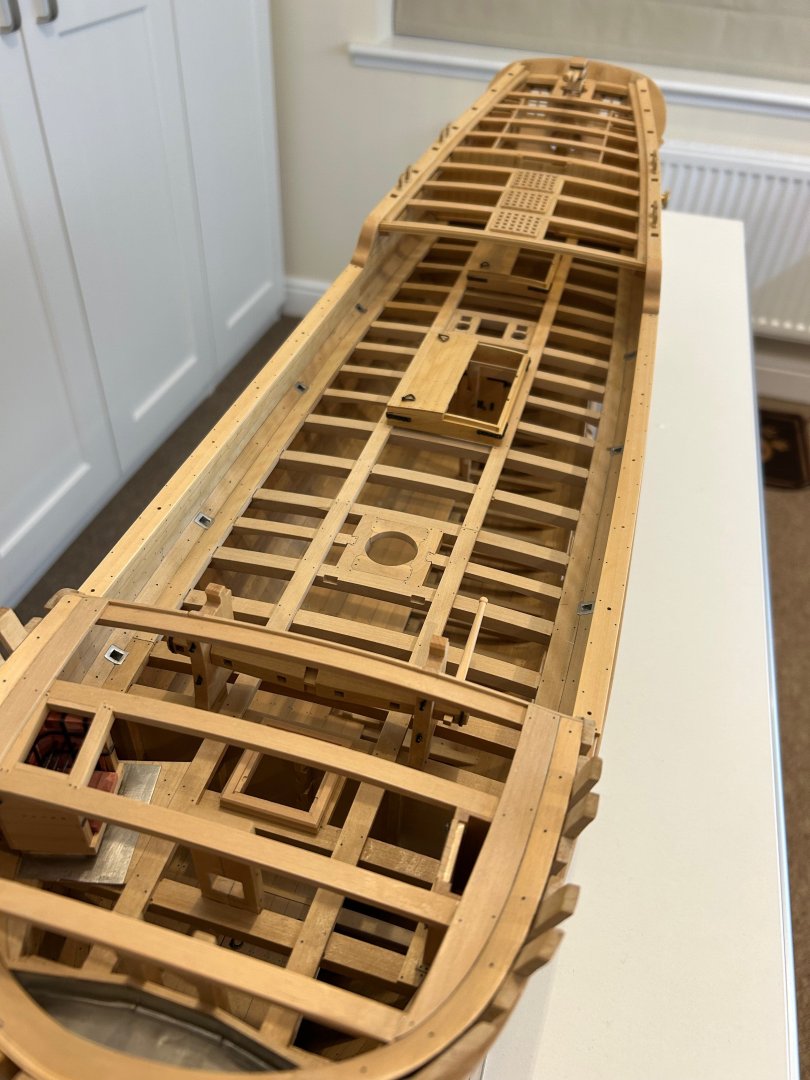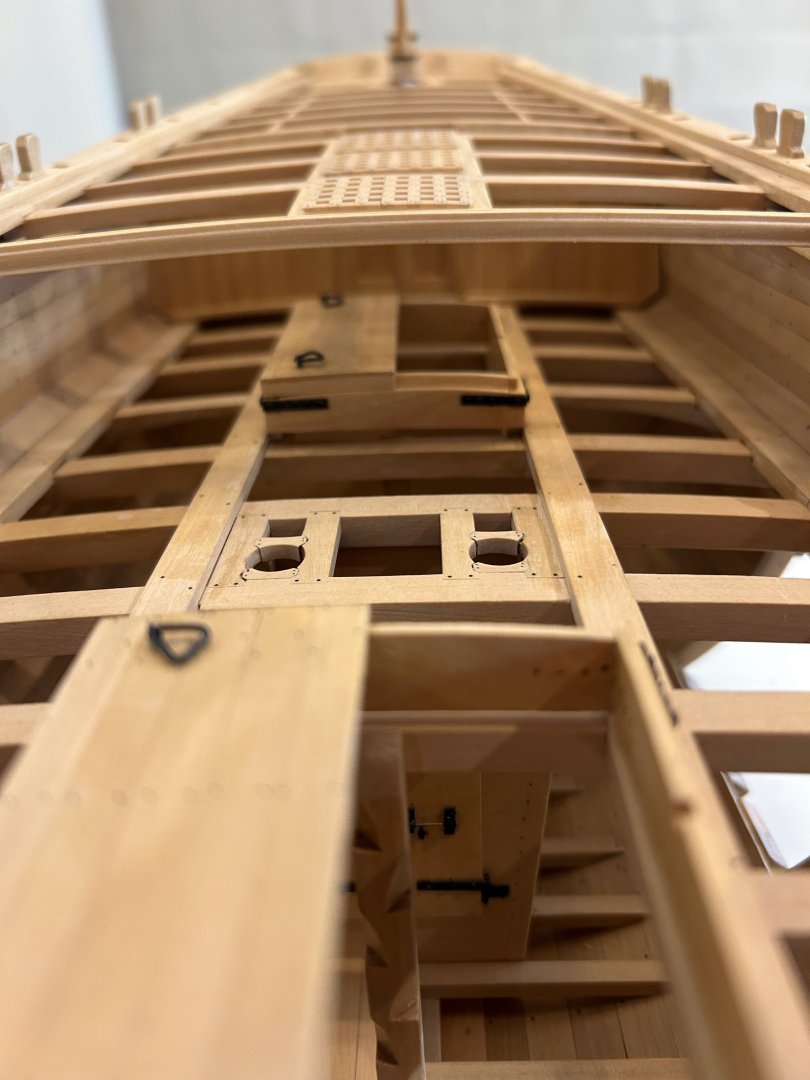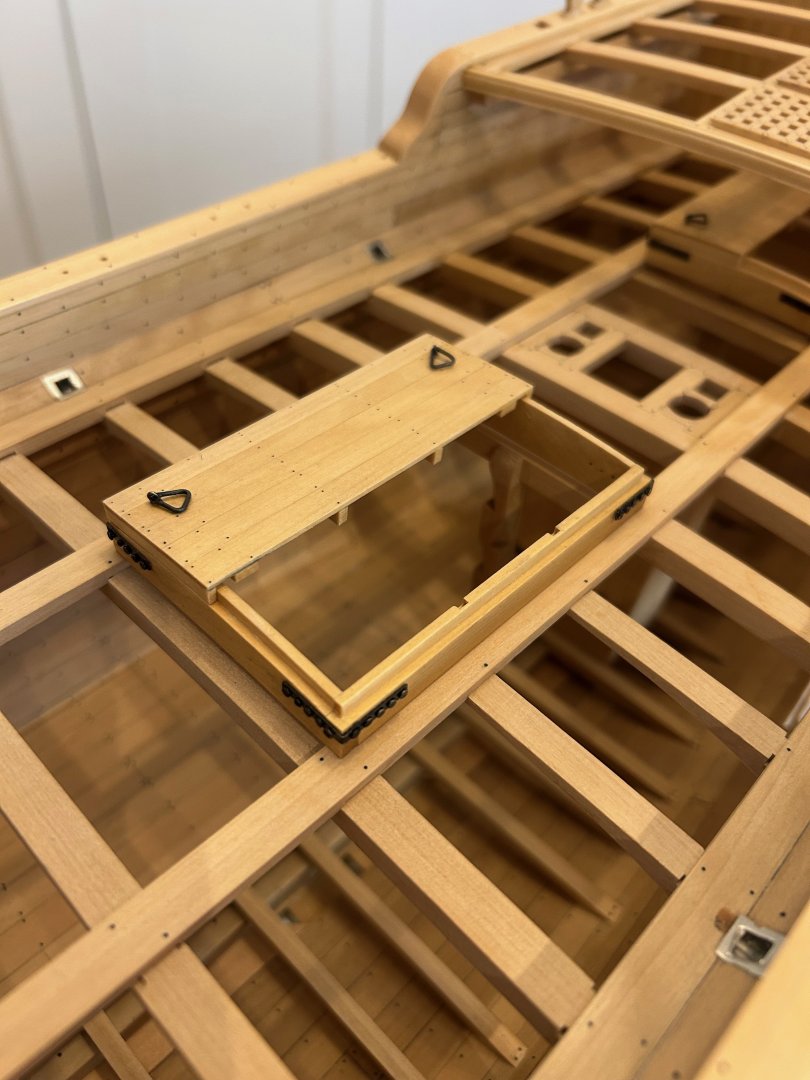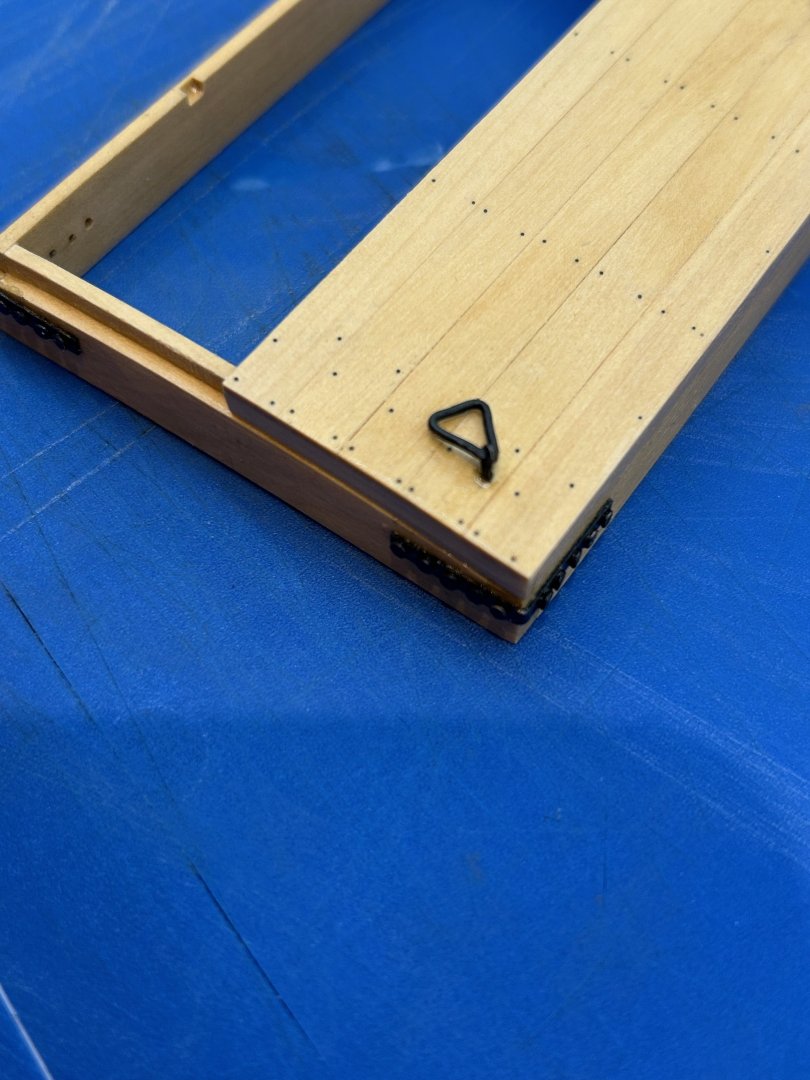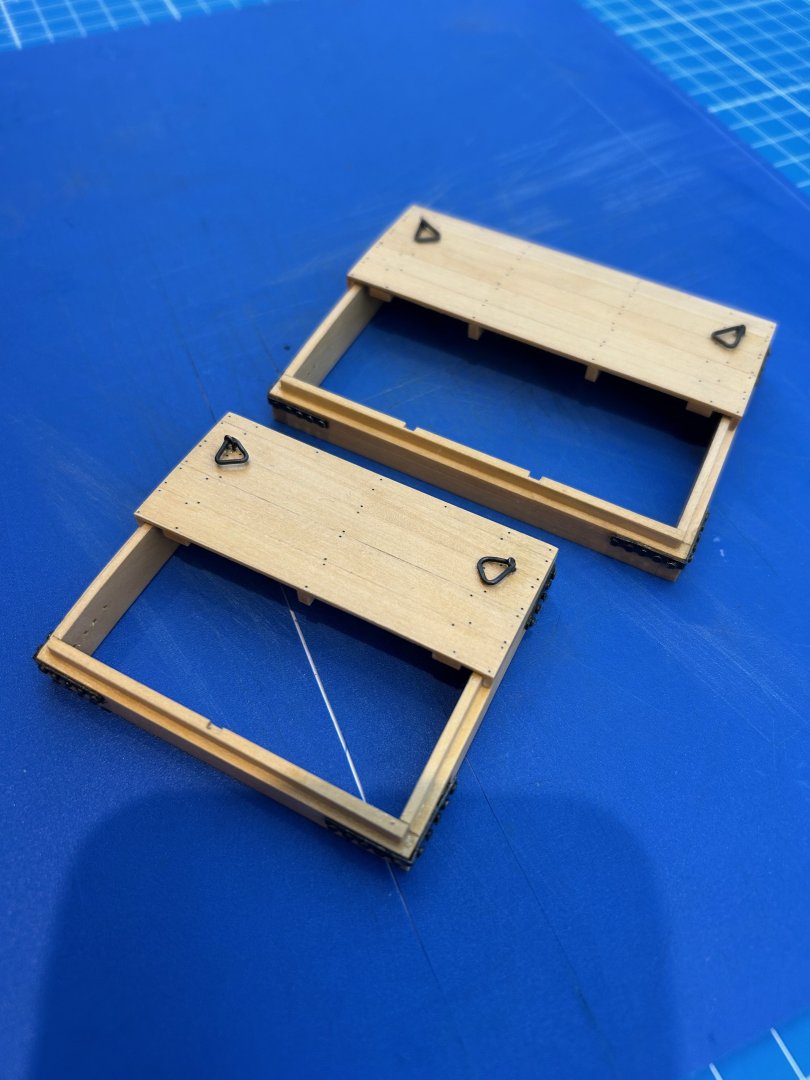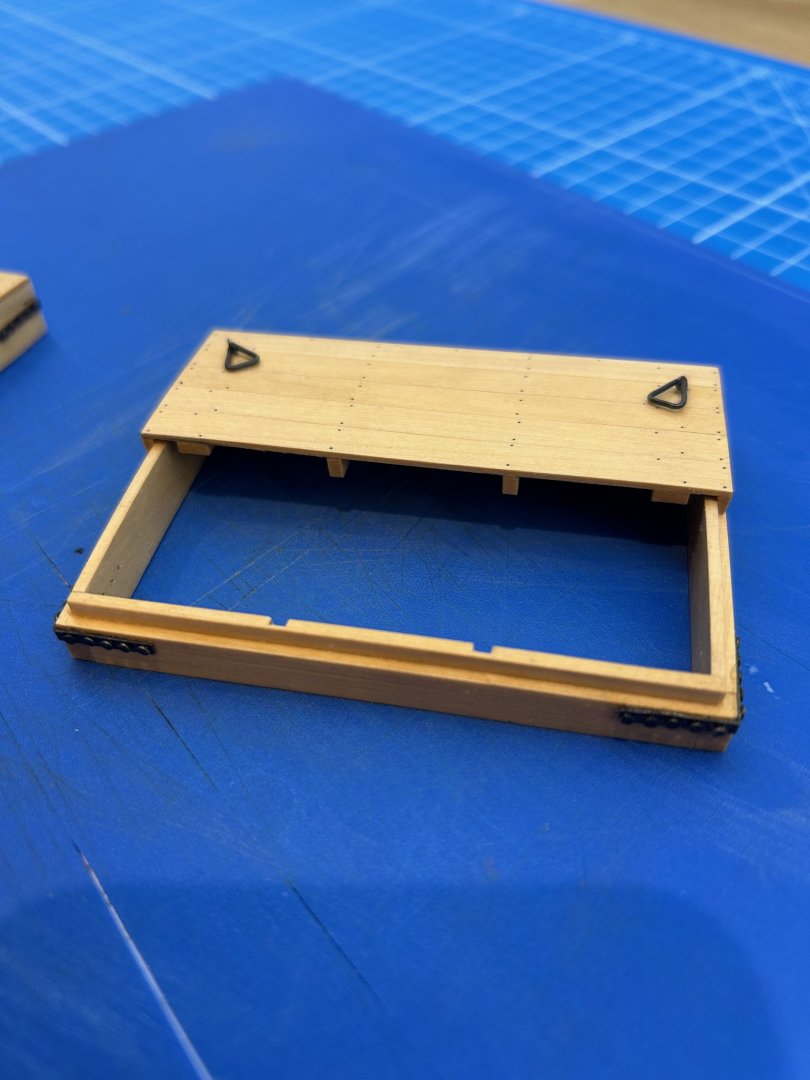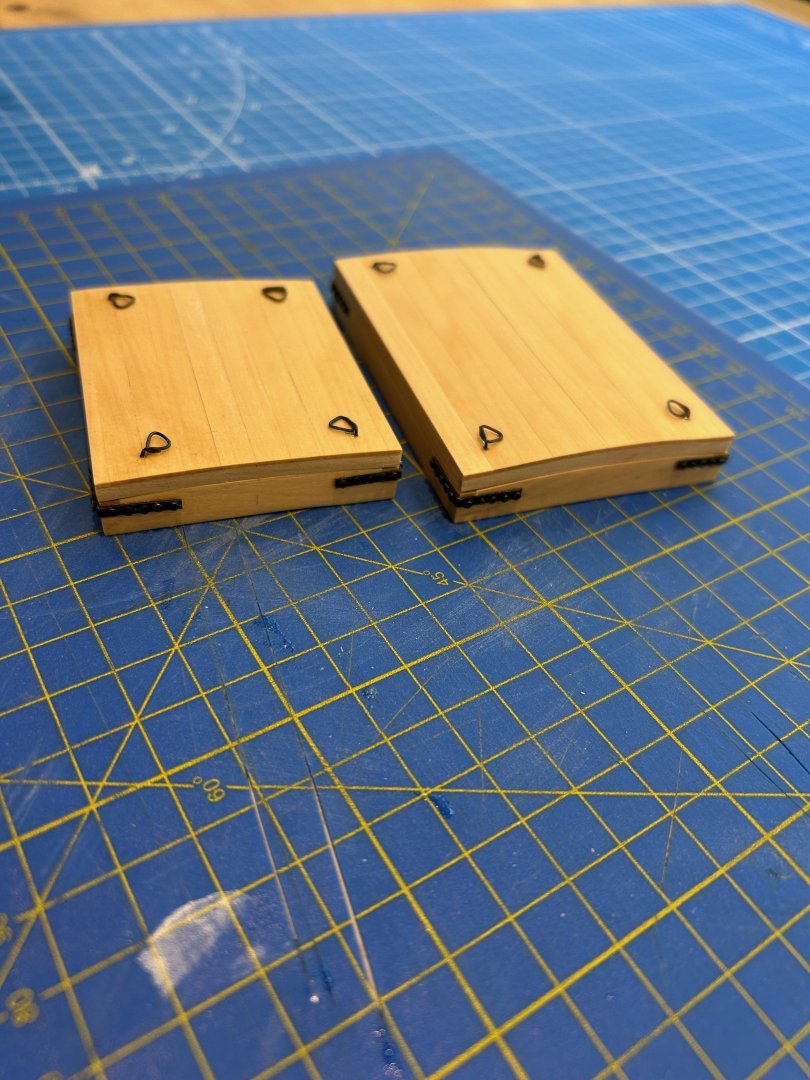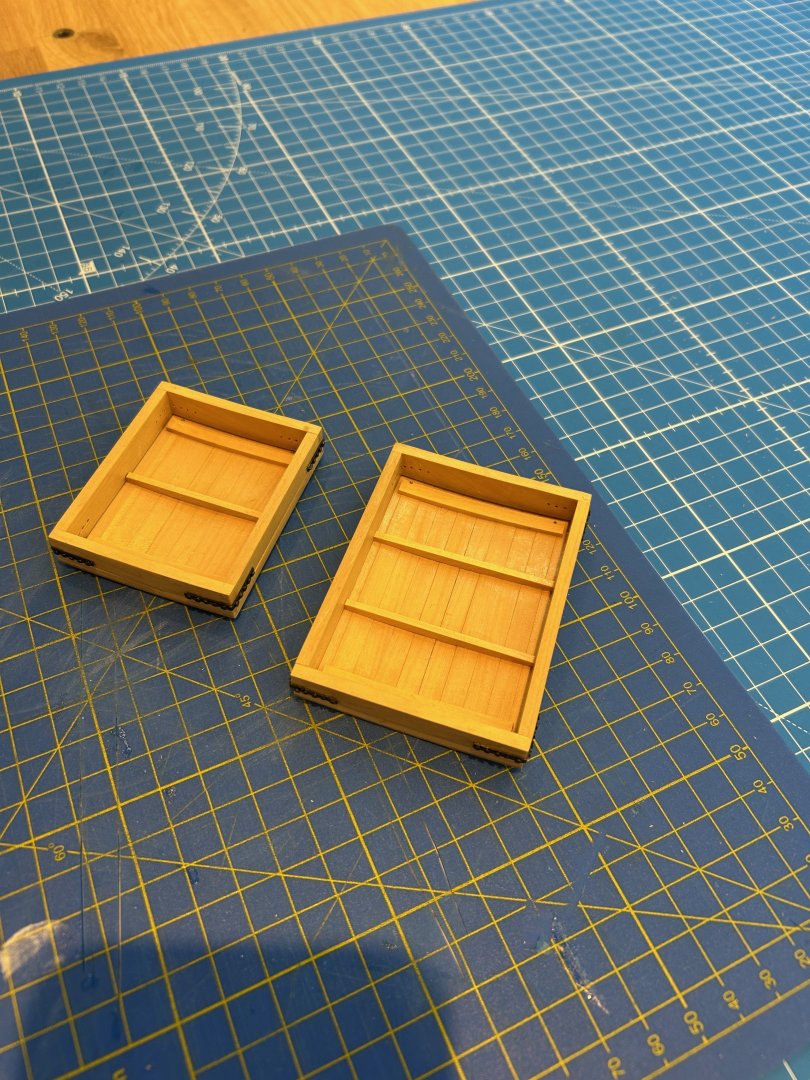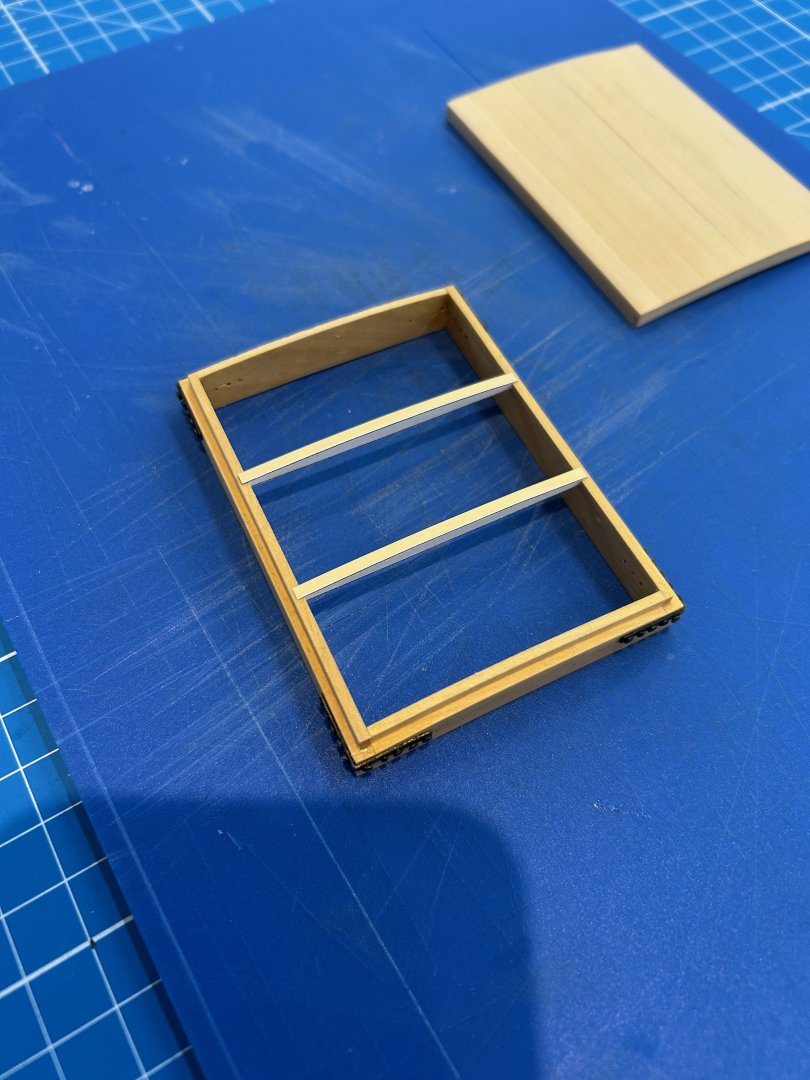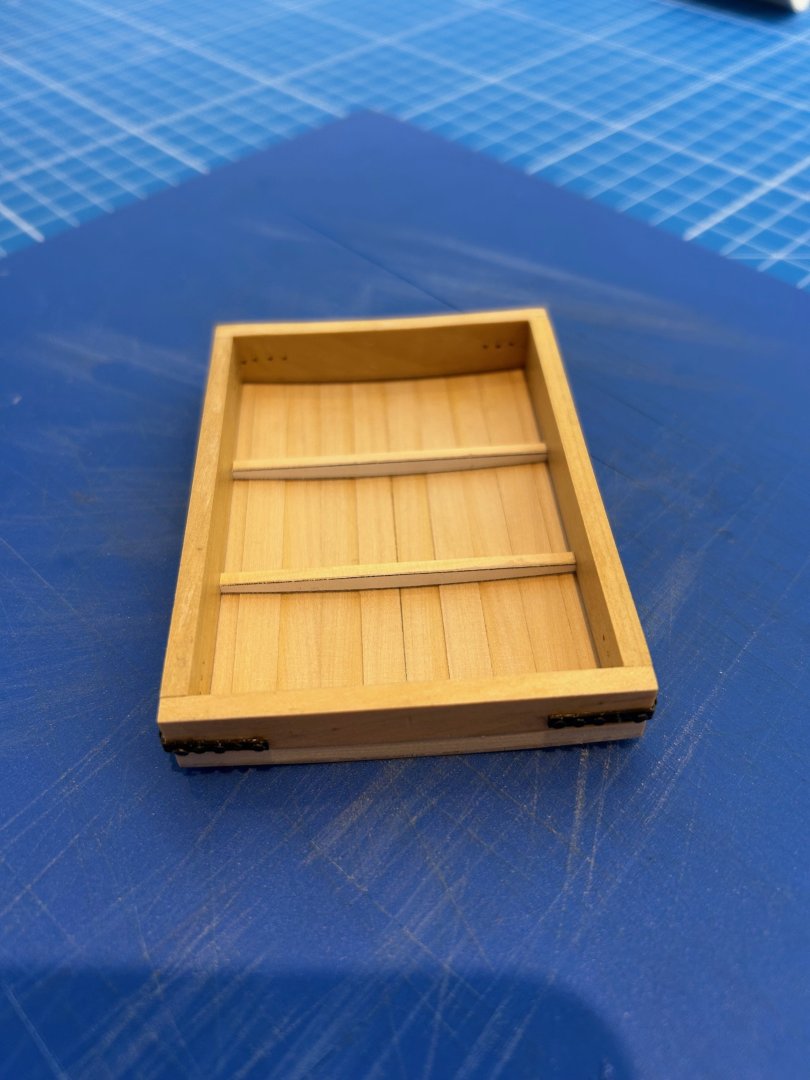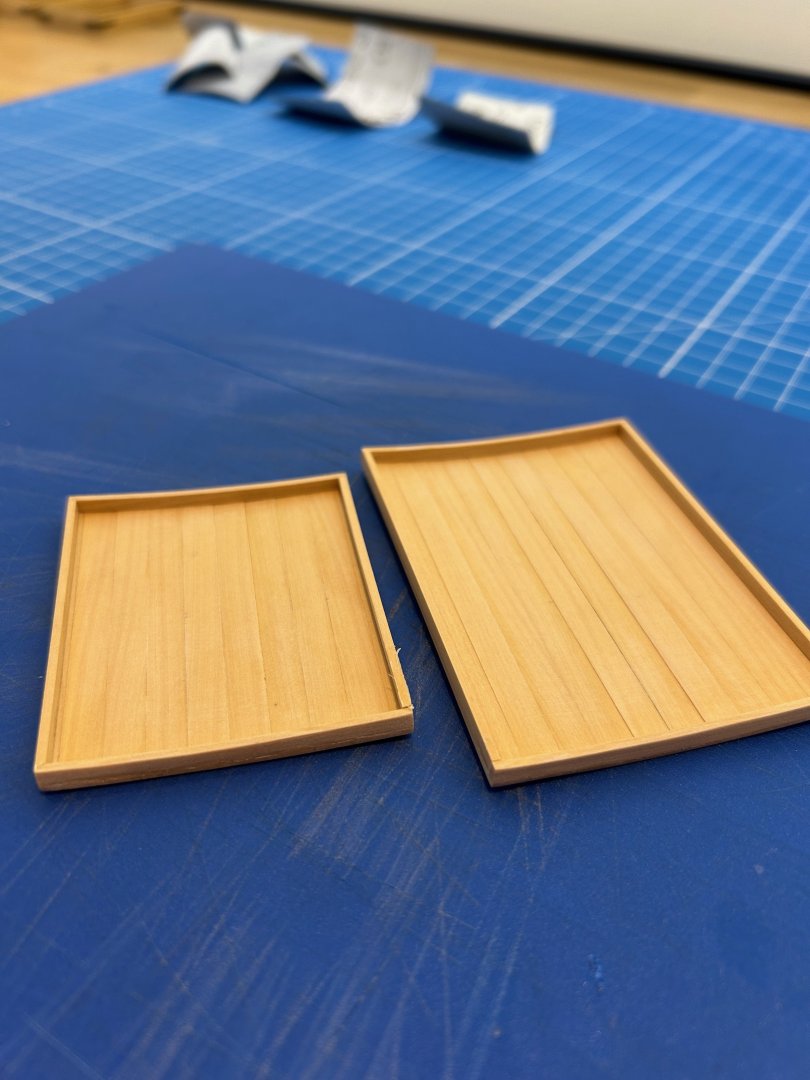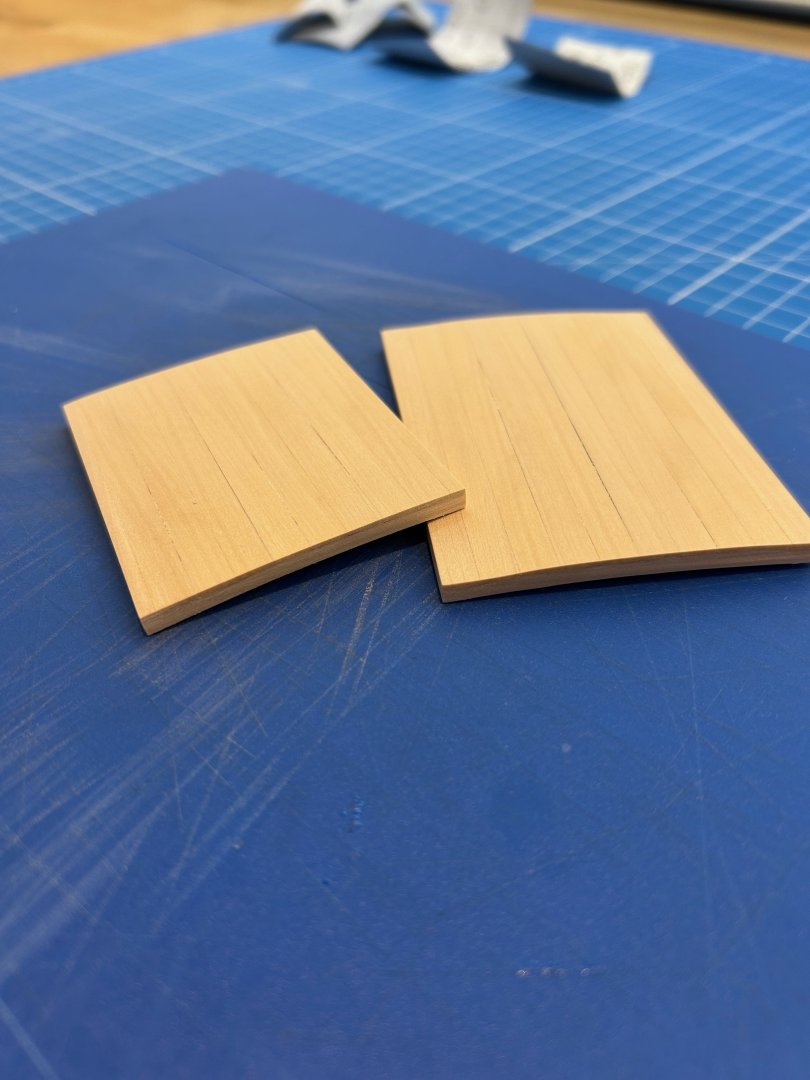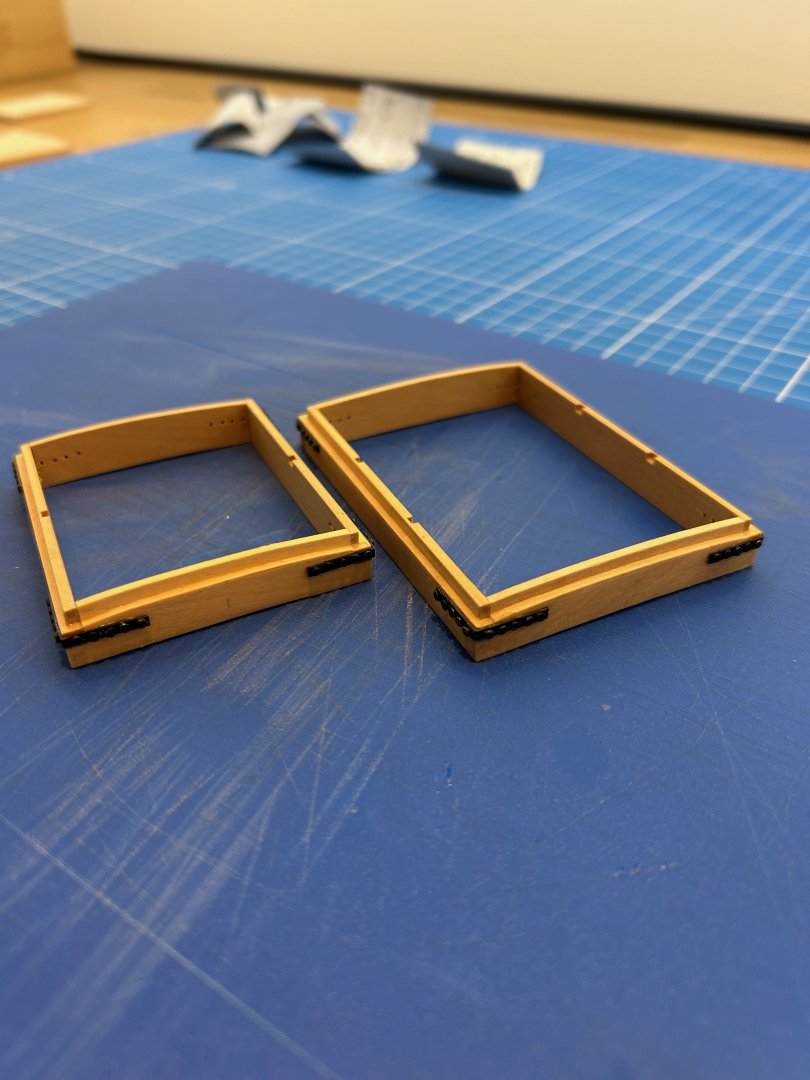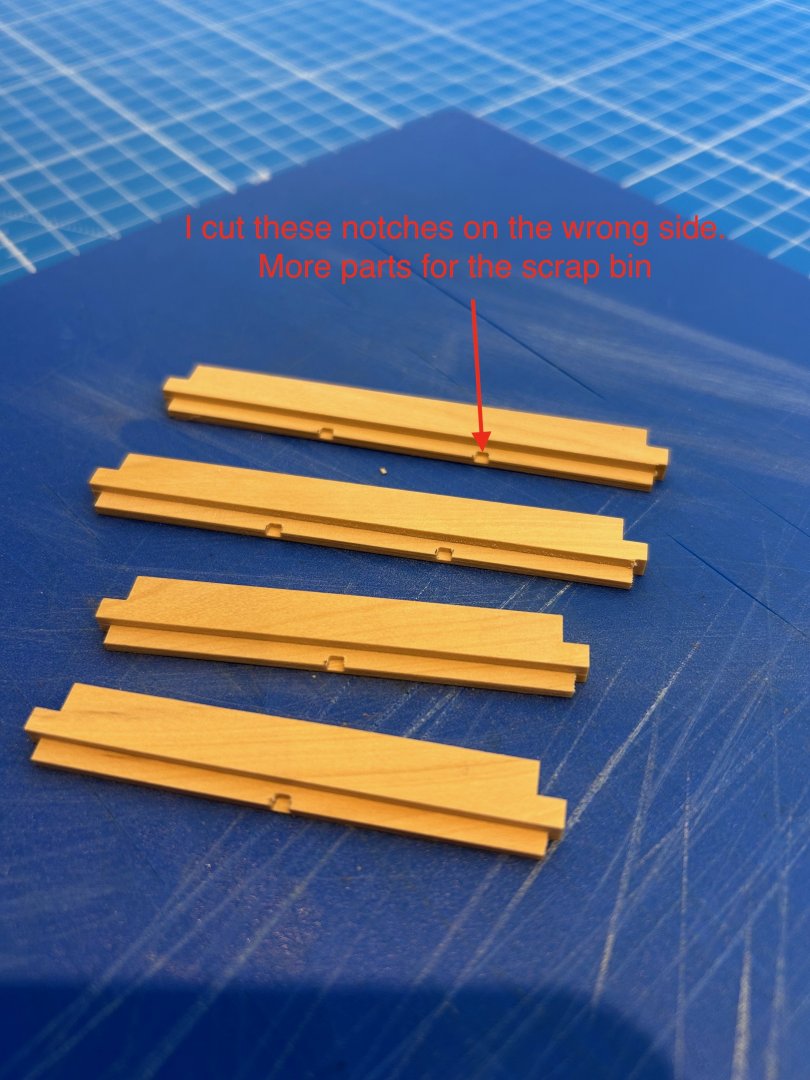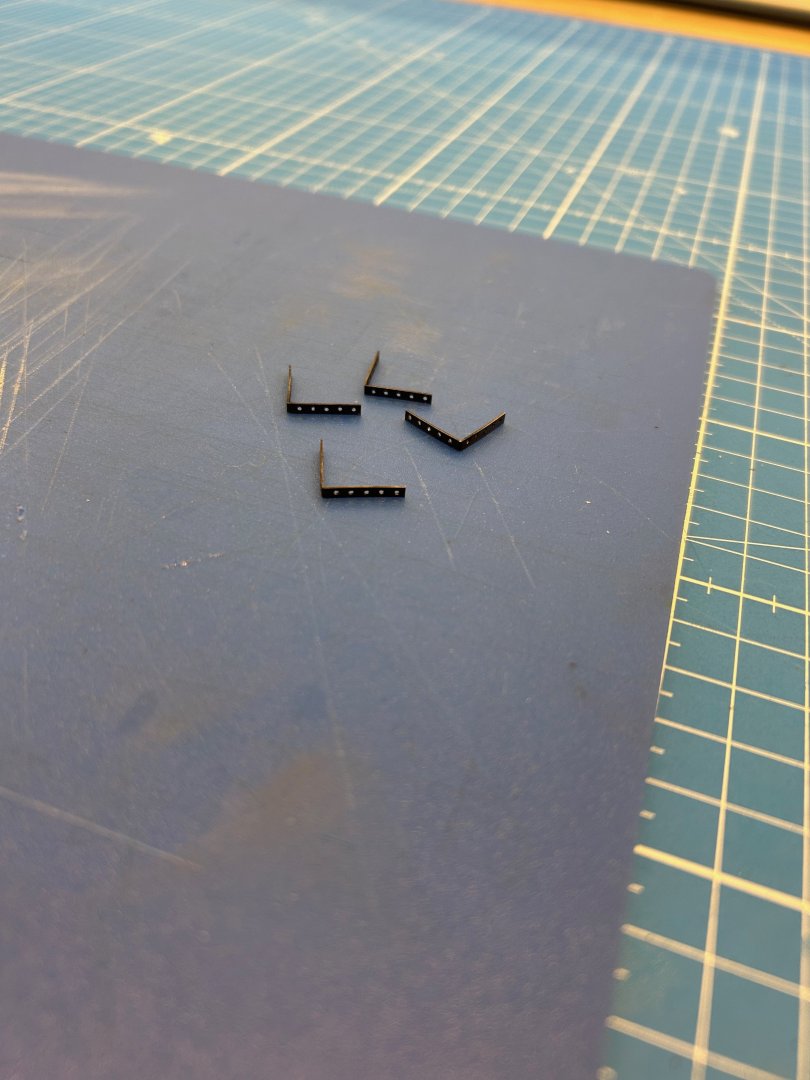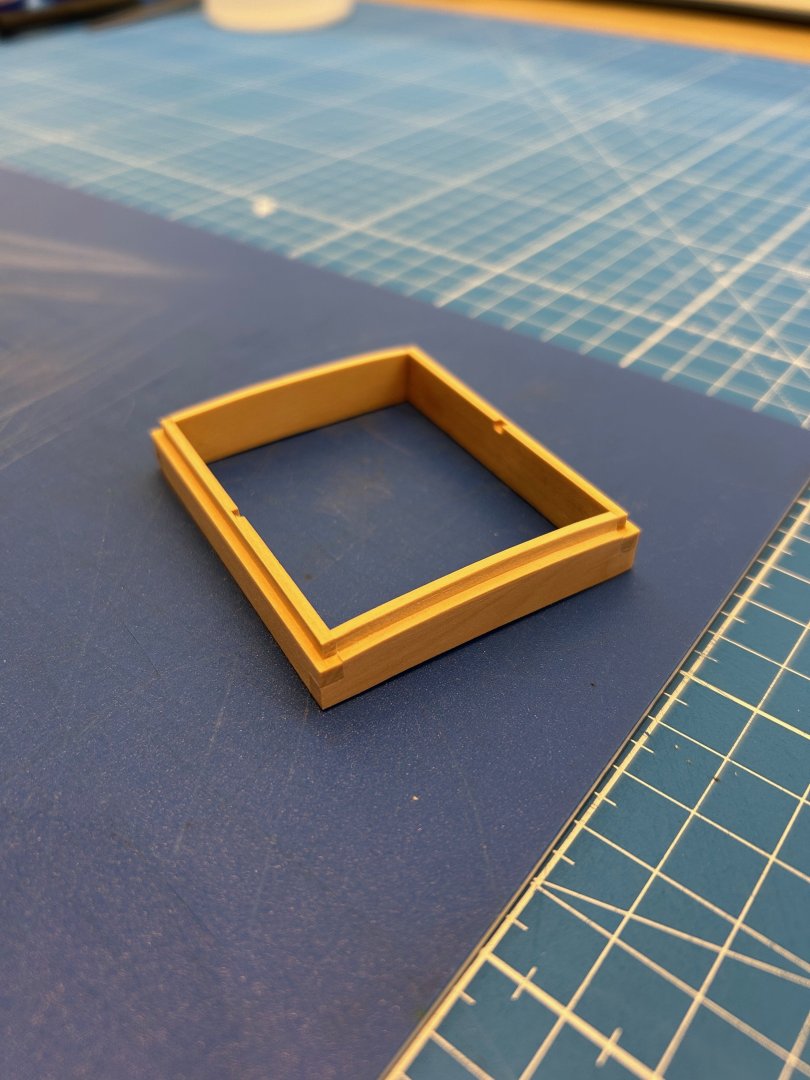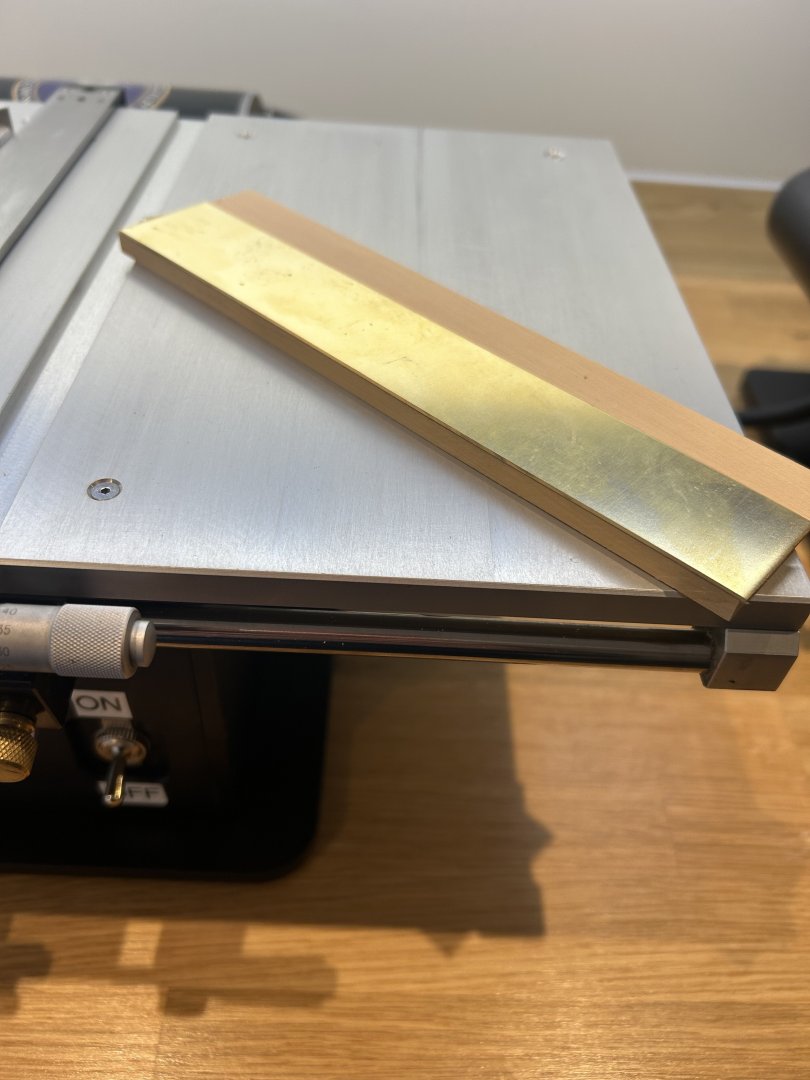-
Posts
1,103 -
Joined
-
Last visited
Content Type
Profiles
Forums
Gallery
Events
Everything posted by Some Idea
-
Just a little update from me today. Ive been working on the moulded rail around top of the bow and I did cheat a little. Instead of making it out of two separate planks I made it from one piece which simply wrapped around the bow. I couldn't think of a better way of doing it so this is what I did. I have also shaped the final 4 timber heads - I'm really glad that I left the timber heads on the frames instead of adding them on later. They are so solid being an integral part of the frame and because of this they are simple to file into shape. I've not yet finished the rail where is curves down towards the main deck cap rail as it needs some more detail. I'm unsure how to achieve this extra detail at the moment but hopefully a solution will come to me nearer the time. For some reason I really like this view of the bow - it still amazes me that parts I made nearly 5 years ago when I was just starting out are pretty much spot on. The bow should however be a sharp point and not rounded as it is now. The nice thing is I can correct this with the cap rail. My next jobs are the two final planks around the bow and the cap rail. Mark
-
I really like epoxy resin it's a great all round glue. I use it for gluing metal parts of all sizes to wood as it gives such a good bond. As Dr PR has mentioned it cleans up nicely with IPA. So what I do is mix a little at a time and then immediately clean any excess with a small brush and IPA. It works a treat!
-
Your method makes the job so much easier! I've book marked the Model cars website as their brass rivets look like exactly what I need. They are currently out of stock but I'll keep checking in. The good news is they also ship worldwide. Hi Toni - thanks for your suggestion and this is something I did try in the past. I never seemed to be able to get a consistent bolt head size and shape using this method. It was quite a while ago though so I think I'll revisit this to see if my technique could be improved. Mark
-
Hi Marc and thanks so much mate! I didn't plan how the planking would look I just got lucky with the particular piece of Castello I was using. What I do try and do though when planking is cut them all from the same plank. That way the colour and texture is similar but this also wastes a lot of wood particularly when spilling. I hadn't tried spilling before this build but due to the plank thickness which is 3.2mm thick in places I had no option but to learn how to do it. I simply watched and followed the tutorials on MSW and now I wouldn't use any other technique as the plank always sits flat on the frames and the clinkering effect just isn't there. It takes a little more effort but it's well worth it. I also have to admit I had to google "chatoyant" but that really does sum it up in terms of looks. Cheers Mark
-
Hi Gerard thanks for your very nice comment on the build so far. I completely agree with you regarding the nail heads they are out of scale. I think I need to order quite a selection of differing nail sizes online so that I have a better choice when building. I find buying them a bit hit and miss online as its difficult to gauge their size without physically seeing them. If anyone could recommend a good supplier and a particular brand that would be very helpful to me - maybe drop me a personal message? Mark
-
I've made a few alterations this weekend as I was unhappy with the triangular ringbolts. I was also unhappy with the way the ship looked with the main hatches in place in the hull. They just looked out of keeping compared to the open format that I've been following.........so I cut the hatches in half. It was one of those no turning back moments. I remade the ringbolts having made mandrel for the shape and I also made separate eyebolts this time too. I'm much happier with the result this time and they do look more realistic. They are now fully fitted into the hull and I now like the way they look as it's more in keeping with the rest of the ship. I was going to make the pumps next but that's on hold until my Xmas present arrives. My fantastic wife has bought me a 17" Sherline lathe which will pretty much finish off my tool collection. I can't wait to set it up and give it a go! So instead I think I'll focus on finishing the bow planking first Mark
-
Reading your post reminded me of when I had the exact same problem but mine was on the transom. I too had to build up a piece exactly as you have and at the time I felt as though it would stand out a mile. In fact I even thought about rebuilding the transom completely to resolve the issue. Now a couple of years later I was putting shellac on the transom and I had completely forgot about the repair and unless you knew about it - well it's invisible. A very nice repair on your part.
- 133 replies
-
- ancre
- Bateau de Lanveoc
-
(and 2 more)
Tagged with:
-
Marc what a great post - for me it's about enjoying the journey in all of its forms. The end of the journey for me just means I cannot work on my favourite subject anymore even though hopefully I have crafted a decent enough ship.
- 2,696 replies
-
- heller
- soleil royal
-
(and 9 more)
Tagged with:
-
Although I wanted to reply to your original post regarding the beams I didn't due to my lack of expertise. However I did think exactly the same as you for the solution as it makes perfect sense as BradNSW has already mentioned - lovely work!
- 99 replies
-
- ancre
- La Mahonesa
-
(and 1 more)
Tagged with:
-
Thank you Michael I have made a start on the main hatches which are a little more tricky than they look. Firstly I made a mistake cutting the notches on the wrong side of the sides of the hatches. I'm sure we've all done something similar; I know that I have. So they were consigned to the scrap bin and I started again. Below is a hatch base with the notches now on the correct side! I found cutting the rebate on the curved ends challenging but I got there in the end. Next I made and fitted the metal corner braces - It was only after I fitted them I looked at the drawings again and they were supposed to be recessed into the base. I have decided to leave them where they are! I also need to get some lightweight wood filler to fill the holes that I drilled all of the way through. Now the fun started - trying to get the hatch tops to match the same curve as the base and also to get an all round tight fit. Then the strengtheners were made and fitted. I like making parts like this as it makes the effort of cutting notches etc worth it when it all fits so nicely together. Further reinforcement is added towards the side of the cover which I managed to glue in the wrong place as I misread the drawings yet again! It's not the end of the world but removing them would cause too mush damage so I will alter the nailing to suit. The lifting handles were next - This is the first time I've tried triangular handles as I've never successfully made them before. I usually make them round as I find this a lot easier but at least I've had a go. They're not great and I would love to know how other builders make these parts? I used a triangular file to bend the brass around but it was so fiddly and I found it difficult to get tight bends with straight sides. I've looked at other builders efforts and they look like a perfect triangle so any help for the future would be greatly appreciated I still need to get the nailing done which always takes me a while and then get them fitted onto the main deck. Thanks for all of the comments - Mark
-
Some more done on Le Rochefort. Taking the advice given I made some pads for the gudgeons on the un-planked side and also recessed them further into the stern post. Great advice as they definitely look and fit better. I did make a real mess of the recesses though - Now I know what I know I would mill these when making the stern post in the future. It would make the process much easier and tidier. I don't think these pieces are my best work and the rudder does sit slightly high but I've learnt a lot during the process. A picture of the ship with the rudder fitted The next part to make was the tiller arm which is quite a prominent part so it needed to be as accurate as possible. I made the arm and the knob on the end separately and used a treenail to help get a good bond between the two parts. I also straightened up the metal banding around the rudder to make it all look a bit better. Another little milestone in my build is now complete. I am so tempted to now finish off the stern and fit the railings and taff rail but I know that they will get broken at some point. So instead I will resist this and make the main hatches and the pumps. Thanks for the help Mark
-
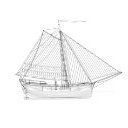
L'Amarante by marsalv - 1:36 - POF
Some Idea replied to marsalv's topic in - Build logs for subjects built 1501 - 1750
Stunning work mate 😊 Your CNC capabilities are just getting better and better. The transition from plans, to CAD configuration to work holding on such a small mill is inspiring - amazing! -
Awesome job Phil - congratulations on your fantastic build 🎉
- 288 replies
-
- Card
- Pre-Dreadnought
-
(and 3 more)
Tagged with:
-

Brass stock in small sections....?
Some Idea replied to Mark Pearse's topic in Metal Work, Soldering and Metal Fittings
Exactly as wefalck says using a slitting blade. I get good results using quite a course 4” diameter blade and attach the brass to a piece of wood. -

Brass stock in small sections....?
Some Idea replied to Mark Pearse's topic in Metal Work, Soldering and Metal Fittings
Hi Mark I too have found this problem so I now cut my own through my table saw. I'm currently using 2.3mm width x 1mm thickness brass and the only way I could achieve this was by cutting it myself
About us
Modelshipworld - Advancing Ship Modeling through Research
SSL Secured
Your security is important for us so this Website is SSL-Secured
NRG Mailing Address
Nautical Research Guild
237 South Lincoln Street
Westmont IL, 60559-1917
Model Ship World ® and the MSW logo are Registered Trademarks, and belong to the Nautical Research Guild (United States Patent and Trademark Office: No. 6,929,264 & No. 6,929,274, registered Dec. 20, 2022)
Helpful Links
About the NRG
If you enjoy building ship models that are historically accurate as well as beautiful, then The Nautical Research Guild (NRG) is just right for you.
The Guild is a non-profit educational organization whose mission is to “Advance Ship Modeling Through Research”. We provide support to our members in their efforts to raise the quality of their model ships.
The Nautical Research Guild has published our world-renowned quarterly magazine, The Nautical Research Journal, since 1955. The pages of the Journal are full of articles by accomplished ship modelers who show you how they create those exquisite details on their models, and by maritime historians who show you the correct details to build. The Journal is available in both print and digital editions. Go to the NRG web site (www.thenrg.org) to download a complimentary digital copy of the Journal. The NRG also publishes plan sets, books and compilations of back issues of the Journal and the former Ships in Scale and Model Ship Builder magazines.



